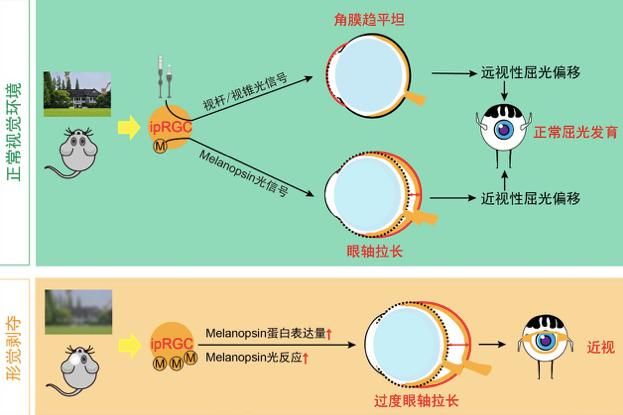
Source: Technology Daily
- Technology Daily News (Reporter Wang Chun) The research team led by Academician Yang Xiongli from the Institute of Brain Science/State Key Laboratory of Medical Neurobiology, Fudan University, recently made important progress in the study of the mechanism of myopia: they revealed for the first time a special type of retinal ganglion Cells—the essential role of ipRGCs in myopia development. Related papers were published in the international journal Science Advances on June 8.
Myopia is an extremely common visual disorder with increasing incidence, affecting one third of the world’s population. The research on the mechanism of myopia is the basis for establishing an effective myopia prevention and control strategy, and it is a major demand of the society. Among the numerous studies on the mechanism of myopia, the team of Academician Yang Xiongli has taken a unique approach and focused on the role of ipRGC. These cells are a special class of retinal ganglion cells, which act as output neurons and transmit photoreceptor signals to the visual center. Not only that, they are also sensitive to light because they express a unique visual pigment, the substantia nigra, so they are called “self-sensing retinal ganglion cells”. Discovered in the early 2000s, this type of cell was named one of the “Top Ten Scientific Breakthroughs” in 2002 by the journal Science.
Based on the mouse myopia model of form deprivation, the researchers systematically studied the role of ipRGC in the refractive development and myopia formation of mice using multidisciplinary techniques. Experiments have shown that selective destruction of mouse ipRGCs with immunotoxins, or specific activation of them by chemogenetic techniques, can cause significant myopic or hyperopic refractive shifts in developing mice, respectively. Further experiments showed that the substantia nigra signal and conventional photoreceptor signal contained in ipRGC affect the development of the eyeball by modulating the axial length and corneal curvature, respectively.
It is worth noting that the expression level of substantia nigra protein in ipRGCs of form deprived mice and the amplitude of the light response mediated by them were all up-regulated, while the knockout of substantia nigra or the small The effect of form deprivation-induced myopia was significantly reduced after mice were raised in an environment with no 480 nm (nanometer) wavelength light (the maximum excitation wavelength of the substantia nigra), resulting in down-regulation of substantia nigra activation. This work clearly clarified the important role of ipRGC in eyeball development and myopia formation for the first time, which was highly praised by review experts, and also provided new ideas for the research and development of future myopia intervention strategies.